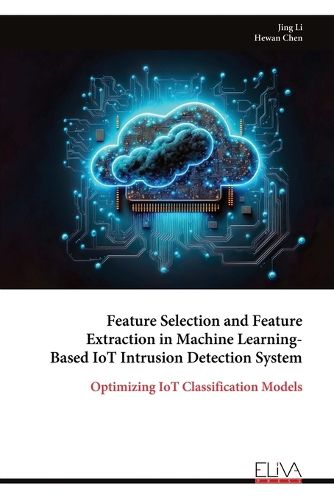Readings Newsletter
Become a Readings Member to make your shopping experience even easier.
Sign in or sign up for free!
You’re not far away from qualifying for FREE standard shipping within Australia
You’ve qualified for FREE standard shipping within Australia
The cart is loading…






This title is printed to order. This book may have been self-published. If so, we cannot guarantee the quality of the content. In the main most books will have gone through the editing process however some may not. We therefore suggest that you be aware of this before ordering this book. If in doubt check either the author or publisher’s details as we are unable to accept any returns unless they are faulty. Please contact us if you have any questions.
In a world increasingly reliant on Internet of Things (IoT) devices, ensuring their security is paramount. Yet, these very devices are vulnerable to cyberattacks, posing significant threats to individuals and organizations alike. To combat this, machine learning has emerged as a powerful tool for network intrusion detection in IoT environments. Delving deep into this intersection of cybersecurity and machine learning, this book presents a comprehensive exploration of feature reduction techniques for IoT network intrusion detection. Drawing from extensive research, it offers a meticulous comparison of feature extraction and selection methods within a machine learning-based attack classification framework. Through rigorous analysis of performance metrics such as accuracy, f1-score, and runtime, the book sheds light on the efficacy of these techniques on the heterogeneous IoT dataset known as Network TON-IoT. Unveiling key insights, it reveals that while feature extraction tends to outperform feature selection in detection performance, the latter exhibits advantages in model training and inference time. But the findings don't stop there. The book delves deeper into the nuances of IoT security, addressing the challenges posed by computational resource constraints. It underscores the importance of feature reduction in constructing lightweight yet effective intrusion detection models tailored for IoT scenarios. Moreover, the book offers practical guidance for selecting intrusion detection methods tailored to specific IoT environments. By analyzing the trade-offs between feature extraction and selection, it equips readers with the knowledge to navigate the complexities of IoT security.
$9.00 standard shipping within Australia
FREE standard shipping within Australia for orders over $100.00
Express & International shipping calculated at checkout
This title is printed to order. This book may have been self-published. If so, we cannot guarantee the quality of the content. In the main most books will have gone through the editing process however some may not. We therefore suggest that you be aware of this before ordering this book. If in doubt check either the author or publisher’s details as we are unable to accept any returns unless they are faulty. Please contact us if you have any questions.
In a world increasingly reliant on Internet of Things (IoT) devices, ensuring their security is paramount. Yet, these very devices are vulnerable to cyberattacks, posing significant threats to individuals and organizations alike. To combat this, machine learning has emerged as a powerful tool for network intrusion detection in IoT environments. Delving deep into this intersection of cybersecurity and machine learning, this book presents a comprehensive exploration of feature reduction techniques for IoT network intrusion detection. Drawing from extensive research, it offers a meticulous comparison of feature extraction and selection methods within a machine learning-based attack classification framework. Through rigorous analysis of performance metrics such as accuracy, f1-score, and runtime, the book sheds light on the efficacy of these techniques on the heterogeneous IoT dataset known as Network TON-IoT. Unveiling key insights, it reveals that while feature extraction tends to outperform feature selection in detection performance, the latter exhibits advantages in model training and inference time. But the findings don't stop there. The book delves deeper into the nuances of IoT security, addressing the challenges posed by computational resource constraints. It underscores the importance of feature reduction in constructing lightweight yet effective intrusion detection models tailored for IoT scenarios. Moreover, the book offers practical guidance for selecting intrusion detection methods tailored to specific IoT environments. By analyzing the trade-offs between feature extraction and selection, it equips readers with the knowledge to navigate the complexities of IoT security.